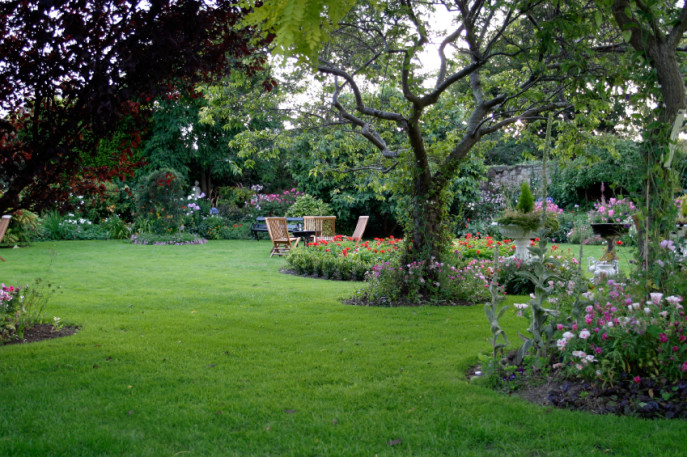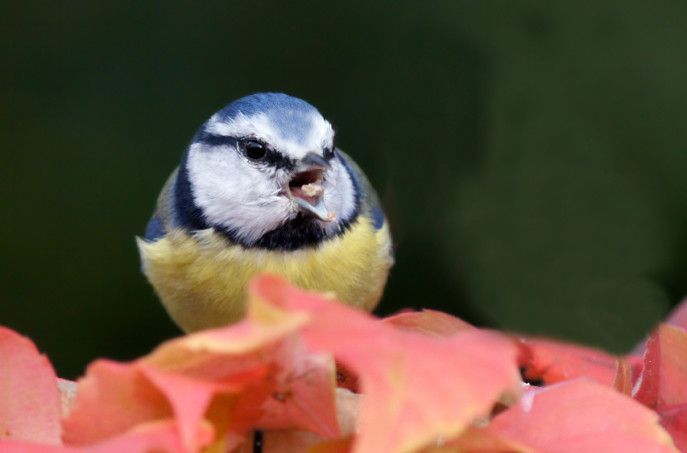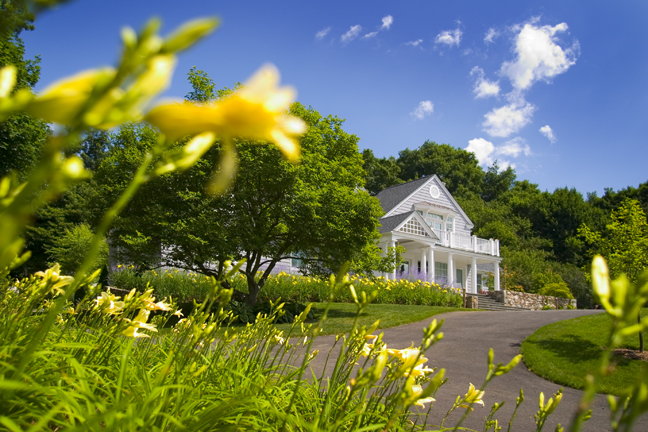
Someone once said that a garden (and lawn, for that matter) has very little to do with nature. A walk through the woods is proof that wild vegetation is opportunistic and provides only the toughest competitors with space, sunlight and nutrients. By contrast, we fill our garden with tender annuals and plants that have gone through multiple hybridizations until they bear little resemblance to their original form. Add to that that we prefer our lawns and gardens weed free, carefully edged and mulched, and there’s a sharp divide between a wild meadow and suburban landscaping.
The real difference, however, is our dependence on chemical pesticides, herbicides and fungicides to keep our properties looking as nature never intended. The best way to create a garden fit for children and pets is to make it a sanctuary for life: bees buzzing through the flowers, trees brimming with nests and berries, and soft grass that’s safe for bare feet.
Lawn and garden chemicals are poisons to living things. They pollute our water, harm wildlife and interrupt the delicate balance of our eco-system. 100 million pounds of lawn care chemicals are used by homeowners on their lawns every year. These include chemicals that kill weeds, insects and a variety of plant diseases. Many of these chemicals are linked to cancer, birth defects, and liver or kidney damage. There is a way to have a healthy lawn and garden without resorting to chemicals, however. Here are three simple steps you can take right away:
- Healthy soil = healthy plants. Good soil is alive, teeming with bacteria and organic content that is naturally resistant to pests and disease. You can boost your soil’s health by spreading organic compost or alfa meal.
- Use corn gluten as an organic fertilizer. Organic fertilizers feed your lawn slowly; quick release chemical fertilizers encourage rapid growth that weakens the grass, promotes disease and leaches into nearby surface waters.
- Tolerate a few weeds. You can dig them out by hand if they bother you, or you can adopt the philosophy of “live and let live.” A few weeds in the garden can also provide a home for beneficial insects, which keep the overall landscape in good health.

Worried about fleas and ticks? Here are four ways to combat these pests without toxic chemicals:
- Use Natural Flea and Tick Controls on Your Companion Animals: Look for Buck Mountain Parasite Dust, available only through veterinarians and pet stores. Its active insecticide is a chemical derived from the Neem tree, which is both a repellant and provides disinfectant and healing properties. A favorite pet store is Earth Animal, which offers a three step process for natural flea and tick control. Learn more here.
- Reduce the tick habitat naturally: Ticks like moist and shady areas, so let in more sunlight. If there are many trees, it’s possible to thin their crowns to let more sunlight reach the ground. Clearing away leaf debris (a favorite tick home) is important, as is cleaning up along stone walls and keeping them free of branches, weeds and other plant debris.
- Establish a Tick Border: A Tick Border is a three to four foot wide woodchip border that is established between the woody edges of your property and your lawn. Ticks are loath to cross the sunny, plant free zone.
- Put up Deer Fencing to stop “tick buses:” A single deer can be host to more than 200 ticks, so by removing their hosts, you reduce the number of ticks.
Here’s Where to Learn More

We’re all connected to each other and to every living thing. The earth is one planet, with air and ocean currents that ignore international boundaries and continents that are impervious to lines drawn on a map. On a much smaller level, the chemicals you use on your lawn and garden do not stay on your property. It’s up to each one of us to research and find less-toxic solutions to our pest problems. You can start here:
- Integrated Pest Management: IPM is an environmentally sensitive approach that suppresses pest populations and reduces use of pesticides. It’s a safer means of controlling pests, with an emphasis on control, not eradication. IPM holds that wiping out an entire pest population is impossible and environmentally unsafe. Natural biological processes provide control with minimal environmental impact. That may mean using beneficial insects that eat target pests, or biological insecticides, derived from nature. The EPA has more information: read it here.
- Bio-Integral Resource Center: BIRC is a nonprofit organization that offers leadership in the development of IPM methods. BIRC works with homeowners, farmers, cities, park and water districts, schools and pest control professionals in pesticide use reduction. Visit their website here.
- Two books to add to your library: Common Sense Pest Control, by William Olkowski and Sheila Daar, and Less Toxic Alternatives, by Carolyn Gorman.







